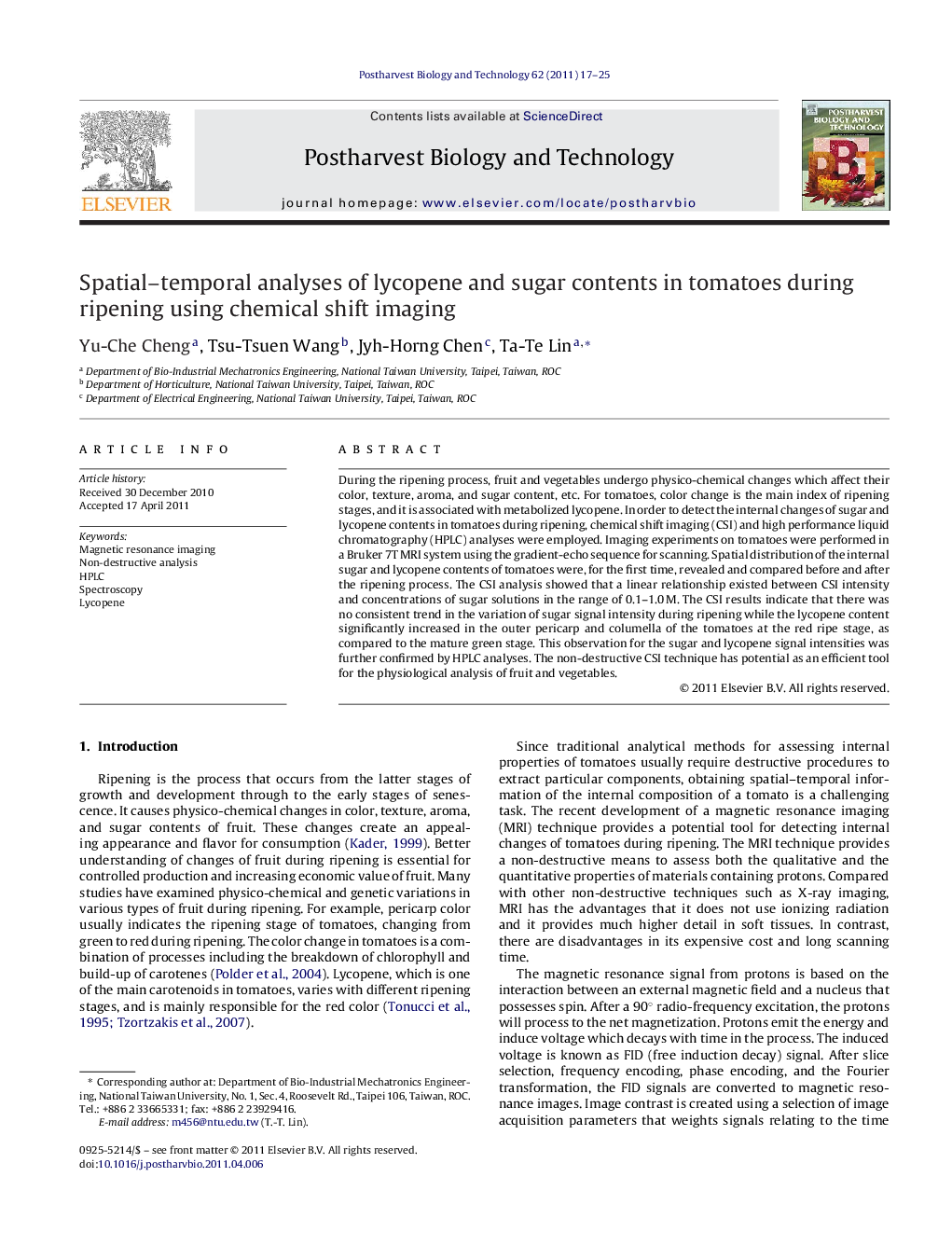| Article ID | Journal | Published Year | Pages | File Type |
|---|---|---|---|---|
| 4518701 | Postharvest Biology and Technology | 2011 | 9 Pages |
During the ripening process, fruit and vegetables undergo physico-chemical changes which affect their color, texture, aroma, and sugar content, etc. For tomatoes, color change is the main index of ripening stages, and it is associated with metabolized lycopene. In order to detect the internal changes of sugar and lycopene contents in tomatoes during ripening, chemical shift imaging (CSI) and high performance liquid chromatography (HPLC) analyses were employed. Imaging experiments on tomatoes were performed in a Bruker 7T MRI system using the gradient-echo sequence for scanning. Spatial distribution of the internal sugar and lycopene contents of tomatoes were, for the first time, revealed and compared before and after the ripening process. The CSI analysis showed that a linear relationship existed between CSI intensity and concentrations of sugar solutions in the range of 0.1–1.0 M. The CSI results indicate that there was no consistent trend in the variation of sugar signal intensity during ripening while the lycopene content significantly increased in the outer pericarp and columella of the tomatoes at the red ripe stage, as compared to the mature green stage. This observation for the sugar and lycopene signal intensities was further confirmed by HPLC analyses. The non-destructive CSI technique has potential as an efficient tool for the physiological analysis of fruit and vegetables.
► A CSI approach to reveal the spatial–temporal characteristics of tomatoes was developed. ► A linear relationship exists between CSI intensity and the concentration of sugar solutions. ► Spatial distributions of sugar and lycopene of tomatoes were compared during ripening. ► Lycopene increased in the outer pericarp and columella of tomatoes at the red ripe stage.
